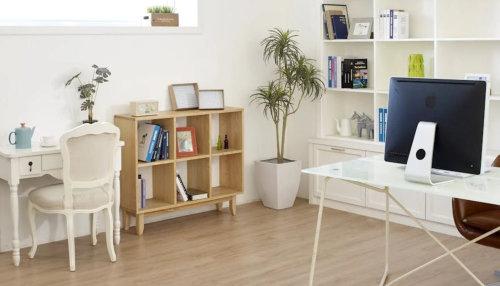GON Reader Question
Hi Maria,
I love my cozy, warm lighting at home, but I’m noticing it’s getting harder and harder for me to read in the evenings. Even with a lamp on, the
words seem dim and blurry.
I don’t want to turn my living room into a bright office, but I need to see my book without straining my eyes. Any lighting tips?
-- Jesse K., Lisbon, Portugal
Maria Responds:
Hi Jesse,
You’re not alone! Many people prefer soft, warm lighting in their homes (including me!), but when it comes to reading, dim lighting just doesn’t cut it. Our eyes need enough contrast to distinguish letters clearly, and as we get older, we need more light—not less—to see comfortably. Let’s
brighten things up (without ruining your cozy vibe)!
1. Upgrade Your Reading Lamp
Your overhead light might be fine for ambiance, but reading requires task lighting—a dedicated light source that shines directly on the
page.
2. Check Your Light
Temperature
Not all light bulbs are created equal. If your lighting is too yellow (2700K or lower), it can make reading more difficult, especially as your eyes tire in the evening.
The best range for reading is between 3000K to 4000K, which
provides a natural, warm-white glow that’s easy on the eyes.
If you like smart control, consider Kasa Smart Wi-Fi Light Bulbs, which allow you to set the perfect brightness and warmth with your phone or voice assistant. 3. Increase Your Lighting Zones
Instead of relying on just one light source, use layered lighting to reduce glare and distribute brightness evenly. This prevents eye strain and makes reading more comfortable.
Combine a floor lamp, table lamp, and wall sconces to create a balanced lighting effect.
If you want a sleek solution, try the O’Bright LED Clip-On Light. You can attach it to a headboard, shelf, or desk for adjustable task lighting. 4. Consider an
eReader with Adjustable Lighting
If you love curling up with a book in low lighting, an eReader with built-in brightness controls can be a game changer.
The Kindle Paperwhite has an adjustable warm light setting, so you can read comfortably in any environment. eReaders mimic real paper, reduce glare, and make reading easier on your eyes—plus, they’re lightweight and portable.
5. Get Your Eyes Checked
If you’ve noticed that words seem blurry or that reading has become
harder even in good lighting, it might be time for an eye exam. Vision changes can happen gradually, and you might need a mild prescription for reading glasses or an update to your current lenses.
Regular
checkups can also catch early signs of eye conditions like presbyopia (age-related difficulty focusing) or dry eye syndrome, which can contribute to reading discomfort.
6. Boost Contrast with a Reading Filter
Sometimes, improving text
contrast can make reading much easier, especially in dim settings.
For Physical Books: Try a reading guide strip. These strips highlight one line at a time and reduce glare, making words easier to focus on. For Screens: Adjusting contrast can help if you read on tablets or eReaders. Many devices have a dark mode (white
text on black) or a warm light filter that reduces eye strain.
You can also use apps like Night Owl or Twilight (for Android) to adjust brightness and contrast levels to suit your eyes.
These small tweaks can make a difference, especially if you’re reading for long periods or find that your eyes get tired quickly.
With a few tweaks, you can keep your home feeling warm and cozy and make sure your books stay crystal
clear. Try out some of these tips, and if you’re still struggling, a visit to your eye doctor is the next best step.
Happy reading!











